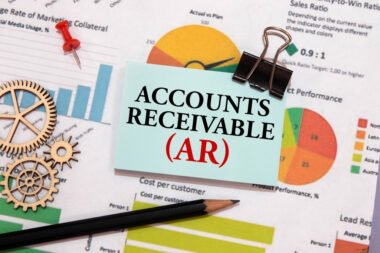For a collection agency, generating revenue and improving cash flow is the main purpose. To achieve this goal time and time again, there are multiple strategies and avenues that are explored including the use of collection agencies that help in recovering the money that is owned to a company. But within this system, there are two different approaches to maintaining that business; mainly first party collection and third-party collection, or the means through which debt is collected for a client. It is important to understand how money is collected through these two avenues.
Third Party vs First Party Collections – What is the Difference?
In a third-party collection, a company would hire an outside entity to collect the overdue debts through various debt collection strategies implemented by that organization or party. In this system, another entity would be responsible for ensuring your money is duly collected and you won’t be directly responsible for collecting the revenue owed to you. Whereas in a first party collection, as it sounds, the organization itself will be responsible for collecting the overdue debts that are owed. The party will implement strategies and assign their own team members to extract the money and recover the outstanding amounts.
Why First Party Collections?
It makes sense that the company that has the amount to recover should be collecting the amount itself. In many cases that is what happens, each of the dues that are outstanding will be collected by the company accounts receivable management that the money is owed to. They will ensure that the amount they must recover is done so by implementing strategies that can allow a smooth transaction of that. They will contact their debtors themselves, establish a communication channel with their debtors and begin sending reminders to ask the debtors to pay.
The Efficacy of this Strategy
In this strategy, the company can incur losses using their resources to collect money, and in some cases may fail to collect the money themselves if their team does not possess the technicalities and strategies to extract the dues that are owed.
This collection strategy is preferred by companies that don’t want to risk any bad blood between themselves and their clients. If there is a chance that a third party can possibly sour the relationship between the company and its debtors, it would be a potential issue and will not be a favorable endeavor.
Why Third-Party Collections?
If a company cannot free up labor or workforce to collect the money themselves or they do not have the capabilities to collect the dues, they will hire a third party to do the collections for them. This is common for small businesses, mid-tier enterprises and some large companies that do not have capabilities in debt collection. They are struggling with maintaining their accounts receivable and need outside help in establishing good faith with their clients while also maintaining their revenue.
The Ups and Downs of Third-Party Collection
When a company struggles to reach their accounts receivables goal and needs to implement strategies to ensure they are recovering enough revenue from their debtors, they must call onto these entities to help them. But such is the case with all third-party collection agencies that they are outside the jurisdiction of the company that hired them and do work independently, which would mean that the main company cannot exert quality control over their practices.
It can become harder to impose regulations and compliance in a situation where there is ample opportunity to divert or change strategies and game plans. While this system can free up some mental and physical load for the company to relay their collection responsibilities to an outside company, they are risking the loss of control and adding extra regulatory responsibility to themselves. So, there is an argument for the fact that perhaps using third party vendors for debt collection may add more to your plate than it takes off it.
This or That – Which Model Suits Your AR needs?
It is very important that you identify your AR needs before you choose one or the form of collection methods. For that you must know if your in-house capabilities are up to the standard to be able to retrieve the amount you are owed. If not, you may have to look at some other option, or another company to do that for you.
If you opt for first party collections, your won debt collection infrastructure and ethos must be solid and quantifiable. If it is not, you may not have a choice but to reach out to a third-party collection agency to do your work for you and bring in the cash.
The Secret Third Option – Improved Collection Strategies
But what if there was a secret third solution that is the best of both worlds? A collection system that emulates your company’s persona and face and approaches your debtors as the first party to collect the overdue amounts. This is the unique capability allowed to you by Last Demand collection service. This software allows you to add your credentials into an interface and approach your debtors to collect the amounts.
Last demand collects your debt for you by posing as you, the company, and establishes a healthy relationship with your debtors. Through this system, you are free from the hassle of collecting the debts yourself, while Last Demand does the work for you and brings you tangible results. Take a leap and try Last Demand for your collection needs and see the money roll back in where it belongs!







